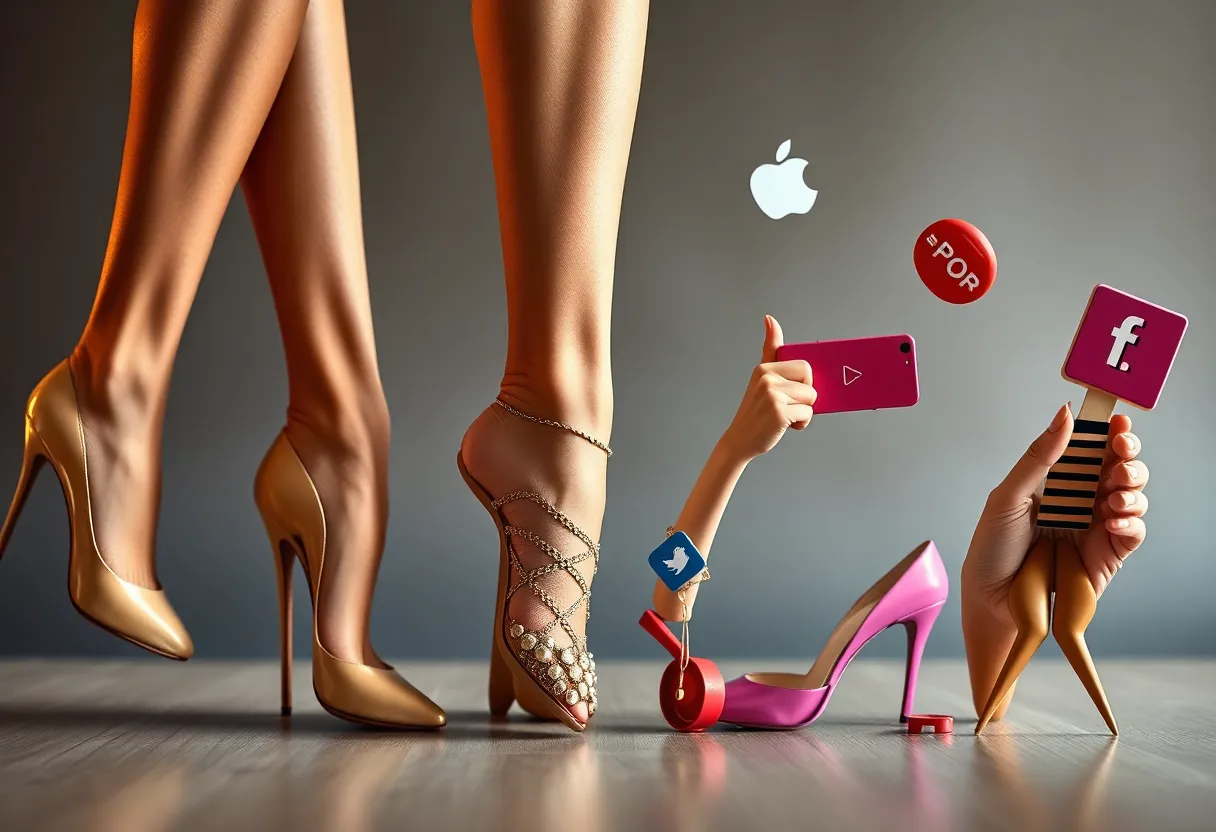News Summary
This article explores the dramatic shifts in cultural trends over centuries, highlighting the historical evolution of high heels as a fashion statement. It discusses how today’s fleeting social media trends differ from past significant movements and examines the rapid cycle of micro-trends and their implications for brands in marketing. Cultural insights and the impact of social media on trends are also vital aspects, emphasizing the need for brands to engage meaningfully with audiences.
The Evolution of Cultural Trends in the Age of Social Media: From High Heels to Fleeting Fads
Isn’t it fascinating how cultural trends have shifted over the centuries? Take high heels, for example; these stylish shoes were originally designed by Persian cavalry back in the 10th century to help riders stay secure in their saddles. Who would have thought that a practical invention could evolve into a fashion statement? Fast forward to the 17th century, and we find King Louis XIV of France strutting around in red heels, showcasing wealth and power, setting off a fashion craze that continued to blossom into the 1800s. By then, high heels had transitioned into a symbol of femininity and style, culminating in a global trend after a staggering 800 years!
Looking back, it’s clear that there were barriers that made cultural exchange much slower. Communication was limited, travel took considerable time, and foreign ideas often faced resistance. Just think about Marco Polo spending three years voyaging from Venice to Beijing. Now, we live in a world where messages can circle the globe in mere seconds thanks to the advancements in technology. By the year 2025, it’s hard to imagine how our perception of cultural significance will continue to change.
Shifting Perspectives on Trends
Today, it seems like trends are viewed as fleeting moments that lack lasting impact when compared to historical movements like the Renaissance or the Jazz Age. These trends once represented deeper values, ideas, and behaviors that defined communities over decades. Nowadays, we’re bombarded with social media fads, which often fade so quickly that many people barely remember them.
Social media trends, fascinatingly enough, move through five distinct stages: introduction, rise, peak, decline, and obsolescence. However, what’s truly mind-blowing is the incredible speed at which they now occur. Just think about the Stanley Cup brand, which saw a meteoric rise in revenue from $75 million in 2022 to an impressive $750 million in 2024. Yet, it faced significant backlash for promoting a culture of overconsumption, highlighting the paradox of rapid growth coupled with fleeting popularity.
The Rise and Fall of Micro-Trends
Have you noticed how quickly phenomena like Barbie-mania can morph into something entirely different—like “Brat Summer”? It’s a constant race, as brands scramble to capitalize on these micro-trends, which cycle through our collective consciousness at a dizzying pace. With changes happening so frequently, it’s become a real challenge for brands to maintain relevance before these trends slip into the depths of memory.
But there’s more: we also see backlash against new trends that often leads to an endless cycle of overconsumption. Brands frequently confuse fleeting fads with substantial cultural movements, leading them to miss the deeper significance of trends. This is akin to Freud’s Iceberg Model; the visible part of cultural trends is often just a small peek at a much larger picture. And according to the Lindy Effect, things that have been around longer tend to keep existing, emphasizing the importance of understanding trends deeply rather than superficially.
The Content Explosion and Its Impact
Did you know that about 7.5 million blogs are posted each day, and over 500 hours of video are uploaded to YouTube every minute? Social media platforms like TikTok see a jaw-dropping 34 million videos published daily! This whirlwind of content means our shared cultural frame of reference is often fragmented, resulting in brands needing to adapt quickly to the rapidly changing social landscape.
This urgency has pushed brands into a homogenization of messaging, where many potently blend into the background rather than standing out. Instead of creating distinctive identities, brands sometimes opt to chase trends instead of engaging meaningfully with audiences. When brands interject themselves into social media discussions without understanding the context, it can disrupt genuine conversations. They need to focus on developing identities that add value to the community rather than just surface-level fads.
Embracing Meaningful Engagement
Partnerships with cultural insiders are paramount for brands. By doing so, they can authentically grasp emerging trends and engage audiences more naturally. Those iconic brands that truly succeed empower the cultural movements around them instead of just echoing viral moments without depth. The distinction between fleeting fads and enduring trends is essential for brands hoping to achieve lasting success.
Moreover, social media trends have far-reaching effects on overall marketing strategies. The rise of brands incorporating social media language into mainstream advertising reflects a significant cultural marketing shift. Marketers are keenly aware of the need for balance: acknowledging trends while still catering to a broad audience. Misalignment between trending internet culture and broader marketability can end up wasting precious resources.
In conclusion, the evolution of cultural trends in our social media-centric world indeed poses unique challenges. Brands today must aim for contextual relevance that resonates with audiences, rather than just gliding on the surface of viral trends. As we witness this rapid cycle of change, adaptation and innovation will be crucial for long-term relevancy in a world where the only constant is change.
Deeper Dive: News & Info About This Topic
HERE Resources
Multicultural Marketing Faces Challenges Amid Economic Uncertainty
SXSW Spotlights Influencer Marketing for Gen Z Engagement
Travis Pointe Country Club Set for Major Renovation
Travis Pointe Country Club Unveils Major Renovation Plans
Gen Z’s Spending Power: A Game Changer for Brands
Spring Into Home Renovations and Community Events
Detroit Lions Expanding Their Reach: Global Marketing Rights Awarded!
Challenges and Opportunities for CMOs in 2025
Reviving Michigan’s Historic Sites Through Renovation
Social Media: A Game Changer for Nonprofits
Additional Resources
- Forbes: Why Brands Need to Escape the TikTokification of Cultural Trends
- Ad Age: After School’s Casey Lewis on Social Media Trends 2024
- Digiday: How Extremely Online Culture is Showing Up Outside of Social Media
- The Art Newspaper: Social Media Trends Shaping the Art World in 2025
- VNHS Mirror: Pop Culture Update – Viral Trends and Celebrity Feuds








